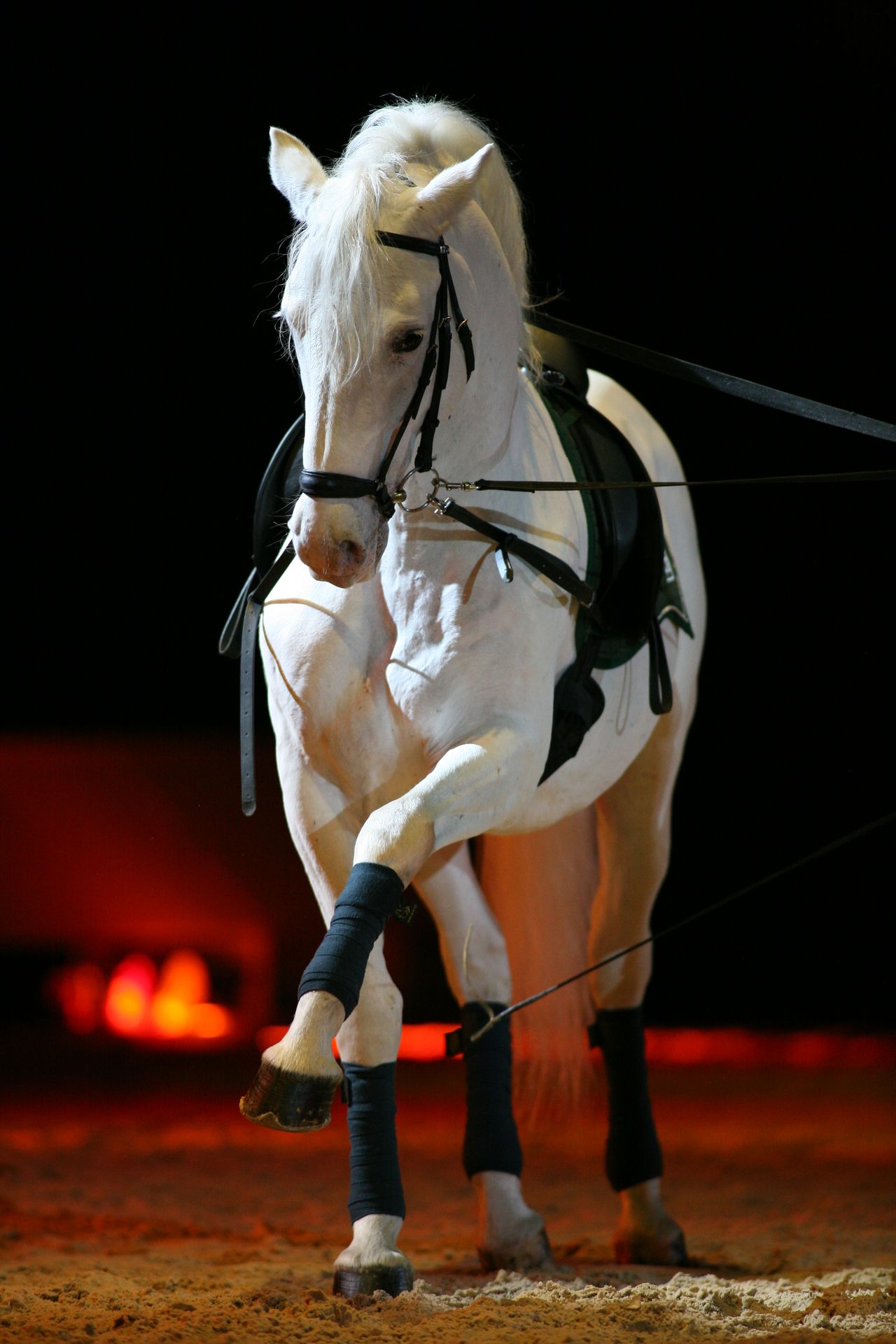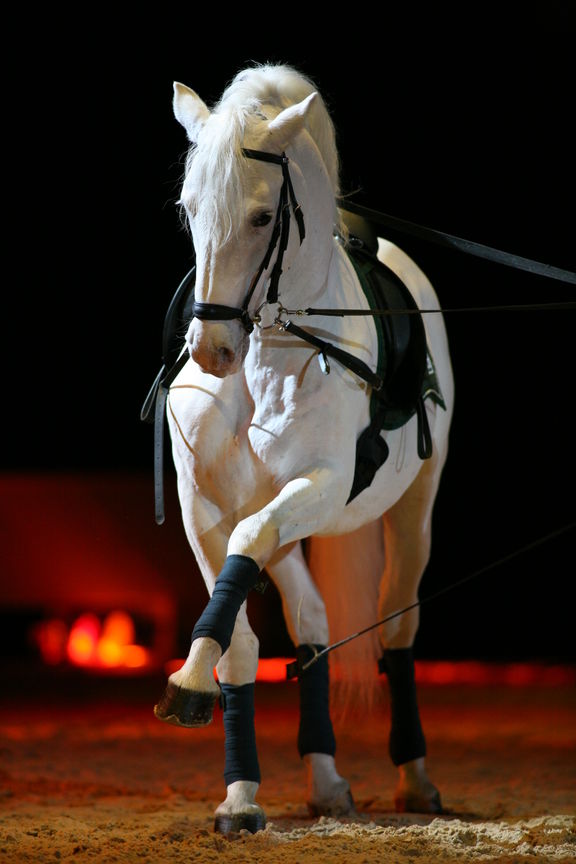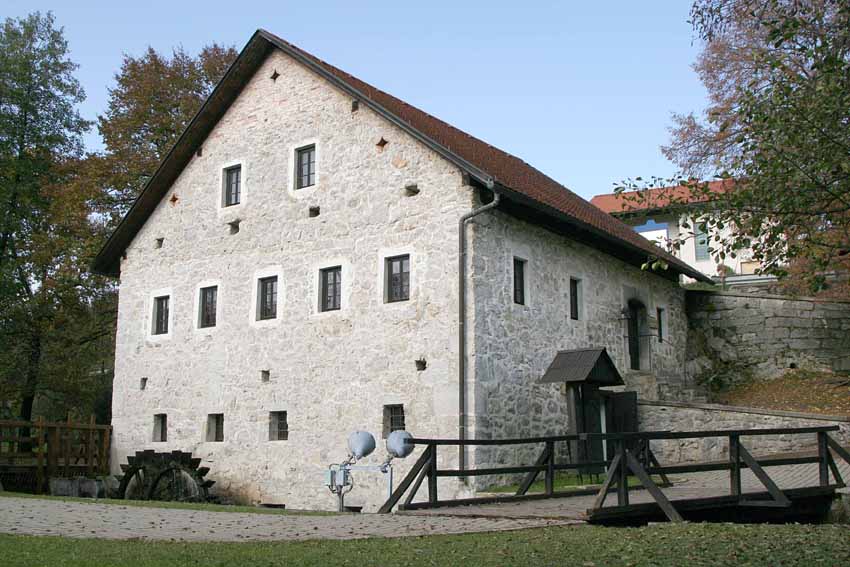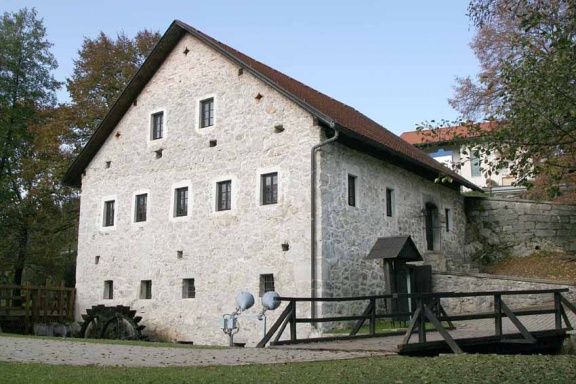 A Lipizzaner horse in a gait training session at Lipica Stud Farm, only stallions are trained for classical dressage and some of the best perform at the Spanish Riding School in Vienna
A Lipizzaner horse in a gait training session at Lipica Stud Farm, only stallions are trained for classical dressage and some of the best perform at the Spanish Riding School in Vienna
Lipica Stud Farm is home to one of the world's most famous breed of horses, the Lippizaner. Founded by Archduke Charles of Austria in 1580, the farm has continuously bred the sturdy white horses for over four centuries and some of the best of these perform at the Spanish Riding School in Vienna.
The farm, extending over 311 hectares in the Karst countryside, was proclaimed a place of special cultural heritage in 1996, and has since that time been state-owned and managed by the Republic of Slovenia. At present the farm is home to around 350 white horses. The traditional Lipica Days are organised at the end of September. Museum Lipikum, the Lipizzaner Museum opened in Lipica in 2011.
NOT ROBOT, WRITING DONE, INFOBOX DONE, PROOFREAD DONE, FERTIK, NOVERIFY, NODEPO, PHOTO, FEATURED, Article, HAS LOGO, Updated 2020, HAS MAP, Museums, Articles maintained by Admin, Intangible heritage, Monuments and sites

 The Trubar Homestead in Velike Lašče dates back to approximately the time of Primož Trubar's life and was also run by his relatives. Exterior in 2006.
The Trubar Homestead in Velike Lašče dates back to approximately the time of Primož Trubar's life and was also run by his relatives. Exterior in 2006.
Trubar Homestead was opened in the village of Rašica, near Velike Lašče, in 1986 on the 400th anniversary of the death of Primož Trubar (1508–1586). He is considered to be the founder of the literary Slovene language and was the leader of the Protestant Reformation movement in Slovenia.
Though a very important figure in his time, not much material evidence is left of his life in Rašica. Consequently, he is presented through copies of his books and some other documents and artefacts connected with his life. That is coupled with stained glass portraits of his famous contemporaries, including some of the rulers of the time. Though lacking any significant material legacy, the guided tours offer an extremely informative insight into the historical contexts and the rather epic story of Primož Trubar.
Next to the main building are a traditional Slovene kozolec ("wooden hay-drying rack"), a water-driven Venetian sawmill, the Skedenj Gallery and a well-kept park area. The former stables have been turned into an inn and the granary into a reception and a shop.
NOT ROBOT, INFOBOX DONE, NEEDSUPDATE, NOVERIFY, NODEPO, Article, NIFERTIK, WRITING, TOPROOFREAD, NO PHOTO, Articles maintained by Simon Žlahtič, Museums, Literature, Monuments and sites, Literature museums, Literature museums and archives




